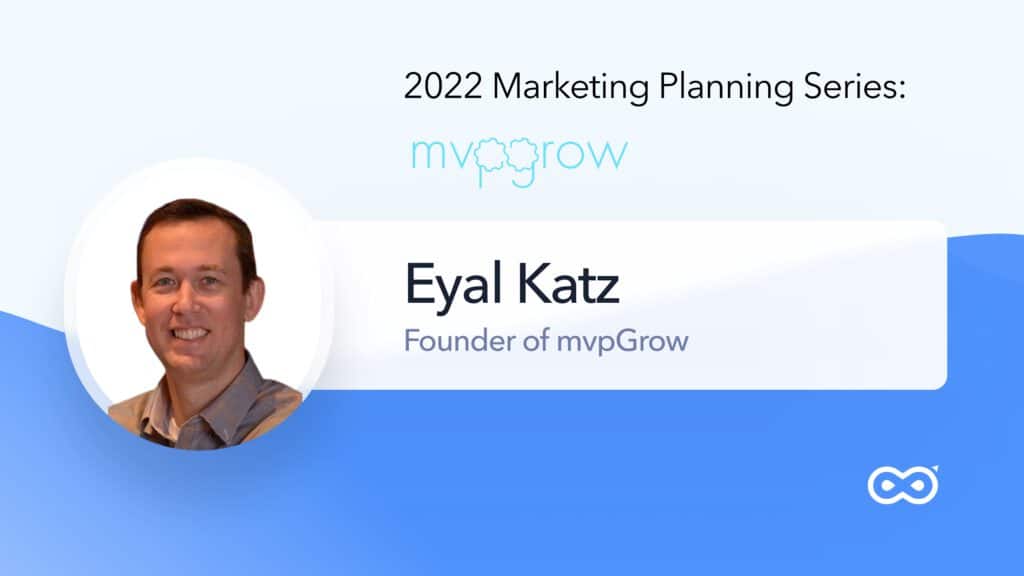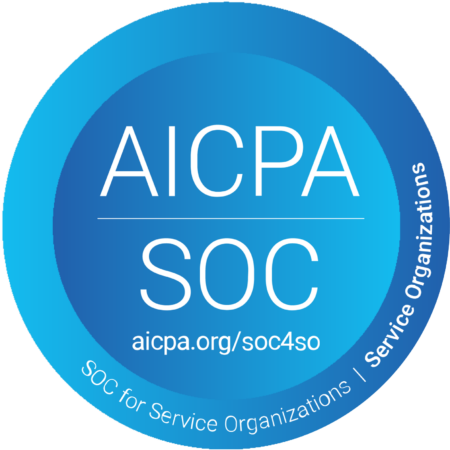Today, we sat down to talk with Eyal Katz, the head of B2B growth agency mvpGrow.
Eyal is a rockstar marketer. At his previous company, AdNgin, he played a major role in growing it from $0–$10K MRR in less than eight months. He then went on to grow the company’s freemium and enterprise SaaS products from $50K to $250K MRR and $5M to $12M ARR, respectively.
Eyal discusses his planning process, sales cycle optimization and more in this interview. Here are some of our key takeaways:
- What Does Your Planning Process Look Like? Get a revenue target for your marketing and then reverse engineer the MQLs from it.
- How Do You Deal With The Long Sales Cycle? Get the sales and marketing teams aligned at the beginning, then look at the sales cycle on a quarterly basis.
- How Do You Plan For The Long Term? Assume that brand recognition will take a long time to achieve, then plan for it and set your expectations accordingly.
- How Do You Optimize Activities Considering The Sales Cycle? Have clearly set goals for all campaigns right from the beginning.
- How Do You Scale Your Budget Without Data To Back It Up? Plan your budget based on whether time or money is your main constraint.
What Does Your Planning Process Look Like?
As an external consultant, usually, clients will want to know what I think about their plan. I tell them it’s okay to make a plan for marketing, but one of the big problems with sales-led organizations is the alignment between marketing and sales. It’s a big topic. And one way to get that on the table and get it aligned from the get go is by introducing it at the planning stage.
When I consult heads of marketing departments on yearly planning, I usually suggest that they get a target for the entire company from the CEO. This is our sales target in general. These are marketing KPIs. These are the sales targets for the entire company. And then I ask the CEO and the VP of sales to have a conversation and look at what percentage of this pipeline is marketing expected to generate for sales?
Choosing targets
Because sales have their own activities. In some organizations, outbound lead generation will be controlled by sales. What we’re asking is: what percentage do you think inbound will take in this? And if outbound is also part of marketing, then get that percentage, too.
And now you have a real target for what marketing is supposed to generate. As far as the pipeline for sales, I don’t think you should be measured by that. Out of the whole ARR that the company is projected to produce, what percentage of that is supposed to be attributed to marketing activities? That’s your lighthouse. That’s what you target, but that is not your KPI.
And I tell that to the VP of marketing very clearly. You do not let that become your KPI. You have to have a KPI that you can control one hundred percent. Obviously, revenue can’t be controlled like that. But from it, we can reverse engineer the process to get to our own KPI.
It comes back down to the MQL. The MQL shouldn’t get thrown out. There are issues, the marketing-sales alignment, no doubt. But it’s because the definition of an opportunity and the definition of an MQL are not one hundred percent aligned. And that’s why, at the planning stage, you need to define exactly what the MQL is, together with sales and the CEO, and have that kind of alignment with the opportunity.
How Do You Deal With The Long Sales Cycle?
This is one of the big sales-driven issues that we face, and we are definitely a part of planning because it’s a part of managing expectations.
All right. So, you have a plan, but don’t come back to me in a month and say, “This is the cohort, let’s have a look and see how many opportunities we’ve brought in now.” The opportunities are going to take time to deliver. We’ve got to look at this quarterly. So, I think a lot of the planning is, you have your reports, you have your documents and that’s a good part of it.
But another really good part of it is getting minds aligned, getting sales, marketing, and C-levels aligned. This is when we should be looking at it.
And it’s a tough conversation. Nobody really likes to have it because it’s hard to get everybody on the same page, but it’s something that we should try.
How Do You Plan For The Long Term?
We’re not running a direct response business. This is not e-commerce, and people aren’t buying shoes. These are deals that can be $100,000, $200,000, up to a few million dollars in value.
These kinds of deals take time to close. And if you come with that experience, and if you’ve seen this in action, then you should already know how it happens. If you’ve worked with a very strong brand, where very large deals can close in a very short amount of time, that’s great. But you can’t expect that from a startup, even one in the growth phase, that’s raised, say, $30, $40, $50 million, because they don’t have that kind of brand recognition. It’s going to take a little bit longer. It’s going to take a little bit longer to close big deals because big B2B deals are usually won or lost on trust.
The post-funding stage
The products are usually at the stage where you’ve raised that kind of money and you’re getting growth money. Your product is good enough and has proven itself to be good enough. With a certain number of clients, you’re already happy. You wouldn’t get that kind of money if you hadn’t already passed the MVP stage.
But your brand recognition is not quite there. So, it’s going to take longer cycles. The conversion rates are going to be a little bit lower—but if you’ve done this before, then you know that’s what’s going to happen. Then, I think it should be fine.
How Do You Optimize Activities Considering The Sales Cycle?
First of all, at the planning phase, having a set goal for your campaign is important.
And it can be a brand awareness campaign. That’s totally fine. But you need to come out of the gate saying, “this is a brand awareness campaign.” Don’t take a campaign that’s not working and then say, “You know what? We’ll just leave it as a brand awareness campaign.” No, that’s not a brand awareness campaign. The messaging is not on point. It has to be a brand awareness campaign from the get-go. If you have a lead generation campaign that’s not working, kill it. Of course, after you have tried to optimize it a lot and it still doesn’t work, or if the costs are so high that it’s just not going to happen.
Having KPIs in place
At first, it’s about planning and having a KPI in place. And then once you know what you’re measuring for, everything becomes a lot easier. First of all, from a technical perspective, you can test that specific thing. And it’s for that specific campaign.
So, when you’ve launched your campaign and you’ve got your ducks in a row, it should work as planned. And now, once you bring everything into your CRM, and you have your contacts in there and you have your leads in there and you have your companies in there and deals and opportunities, most CRMs today know how to take all of that and attribute it to the right source.
The need for third party attribution software
That being said, it’s not always that simple because B2B operations are complex. Sometimes, we need to have a little bit more customization. So, I would suggest, if you’re at the point where you’re investing a lot of money into marketing activities and it’s very complicated, and you have a lot of touchpoints—let’s say you’re running ABM campaigns, which usually require a lot of touchpoints—and you are highly invested into ABM campaigns.
And you want to attribute it back because, with ABM campaigns, you can have a lot of people in the organization that are all coming into contact with your content, with your CTAs, whatever that may be. We have 30 people from that company in our pipeline. How did everything start? And then, after everything started, who was a part of all of this? There’s a big mess to make sense of, and in those cases, you probably need help from third-party software that can help you attribute all of those different touchpoints.
How Do You Scale Your Budget Without Data To Back It Up?
When startups begin to get investment money, they’ve basically activated a timer. There’s a countdown.
That money is allocated for a certain amount of time. Within that timeframe, they need to show growth. And it’s usually very competitive, very high growth, which is going to be very hard to achieve. So, they need to take a deep breath and realize that it’s a very lofty goal, and they need to do whatever they can to reach that goal.
But we’ve also got to look beyond that. Because startups are usually not going to have an exit within a year and a half, even if that’s the runway that you have. They’re not going to get an IPO within a year and a half. It’s going to take more time. And you’ve got to look beyond that runway that you’ve just received.
Building a brand
You have to try and get to that goal, but you also have to build a brand for the future. And that’s going to be very important because building that brand is what’s going to set you apart. So then, two or three years from now, your brand is going to drop your cost per leads very significantly. It’s all about having patience and being able to have that wall in front of everyone who’s asking, “where are the leads? Why are there not more leads?” You’ve got to be like, “30% of the budget, I’m going to allocate to brand awareness.”
We’re not going to talk about lead generation when it comes to those campaigns, that’s not their purpose. The other 70%, we’ve got to talk about lead generation. We’ve got to hit those targets. And how you would start doing that depends on whether you have money or you have time.
Money VS time
It’s usually a function of either money or time. If you have a lot of time and you don’t have the money, usually what you invest in is SEO. SEO is more of a longer play for lead generation. It builds your brand and it takes a few months for the traffic to come in. But usually, you’ll get it to your content rather than your actual lead generation pages. So that’s pretty much your play.
That’s usually not the case when you’ve just got a pile of money at your doorstep and the timer is on. That means you’ve got to invest more in PPC. And if you do that, and especially if you look at Google and Google search, you can either wait until you get to page one or you can buy it and you’re instantly on page one. So that’s what I mean when I say it’s time or money. You can either wait for yourself to move up or you can just put your ad on there.
Conclusion
Planning a budget according to time and money constraints is definitely a winner for us. When you don’t have the data to plan better, you can always go for this option. Another great takeaway is, of course, the mindset shift required to play the long game with your brand awareness campaigns.



